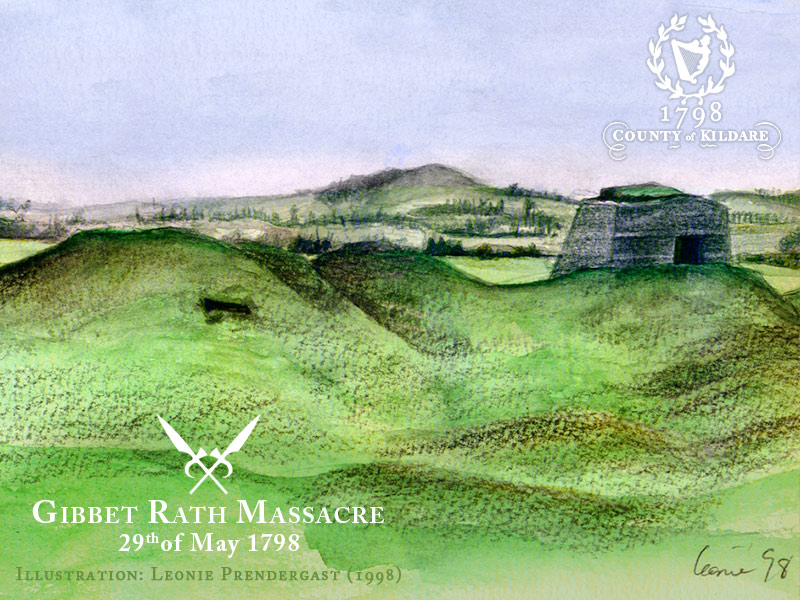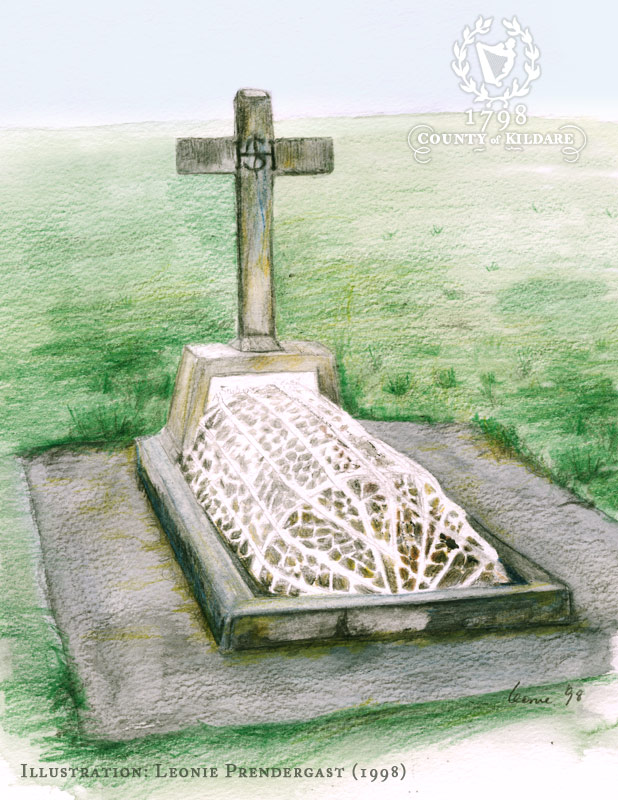Rebellion Towns & Villages

Gibbet Rath
Major General Sir James Duff left Limerick on the 27th of May, to open the lines of communication with Dublin. Duff’s force arrived in Monasterevin in the early hours of Tuesday the 29th of May. Joined by the local yeomanry, Duff marched towards Kildare with 7 pieces of artillery, 150 dragoons and 350 infantry, “determined to make a dreadful example of the rebels.” They marched out of Kildare to the rebel camp at the Gibbet Rath on the Curragh, where the rebels had been negotiating a surrender with General Dundas.

Duff described what happened next in his dispatch to General Lake:
“We found the rebels retiring from the town on our arrival, armed, we followed them with the dragoons. I sent some of the yeomen to tell them, on laying down their arms, they should not be hurt. Unfortunately some of them fired on the troops; from that moment they were attacked on all sides – nothing could stop the rage of the troops. I believe from two to three hundred of the rebels were killed. We have three men killed and several wounded. I am too fatigued to enlarge”
GENERAL DUFF TO DUBLIN CASTLE MAY 29th.
There were 85 widows in Kildare town’s Claregate Street the next morning. Almost 350 rebels lost their lives, including Father O’ Farrell, a Carmelite Friar. One of the officers of the City of Dublin Militia which constituted a large part of Duffs force, was the father of Lieutenant Gifford, lately murdered by the rebels in Kildare.
Rebellion Towns & Villages
Naas | Ballymore | Old Kilcullen | Knockaulin | Narraghmore | Ballitore | Athy | Monasterevin | Kildare Town | Rathangan | Gibbet Rath | Clane | Prosperous | Timahoe | Ovidstown | Surrender
